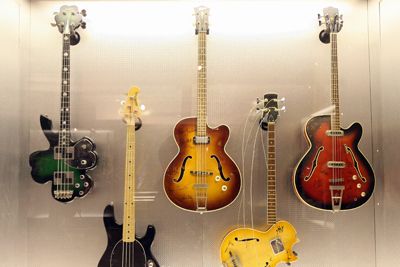Have you ever heard musicians talk about how their instruments can "speak" to them? Although they probably mean this in a more figurative sense, thanks to a special device, the idea of an instrument speaking can literally come true -- well, almost.
Whether you're a fan of classic rock or not, you've probably heard of some songs in which the artist actually makes a guitar "talk." The technique became popular in the 1970s, thanks largely to Peter Frampton, a rocker who made his mark with the effect. Frampton famously was able to allow his guitar to play decipherable words and sentences, like "Do you feel like I do?" But even some of his fans are unaware of what's really behind this nifty gimmick.
Advertisement
It's not that Frampton is so adept with his guitar-playing fingers that he can make chords and notes sound like human speech. Rather, a clever device called the talk box allows Frampton to serenade his audience though his guitar.
The talk box is not to be confused with other effects devices, such as the wah-wah pedal or vocoder. A wah-wah pedal is another staple of classic rock music, but musicians simply use a foot pedal to make an electric guitar's frequency shift from treble to bass, creating a "wah" sound." And a vocoder is a device that filters and processes a human voice, and spits it out again sounding computerized and robotic. Some also mistake the talk box for Auto-Tune, a technique that has become popular in the past few years, especially in pop music. Auto-Tune is a type of software that can help slightly manipulate a singer's voice to hit the right notes.
The talk box device, on the other hand, takes advantage of the unique qualities of the human mouth and vocal tract and lends them to instruments.
Advertisement




